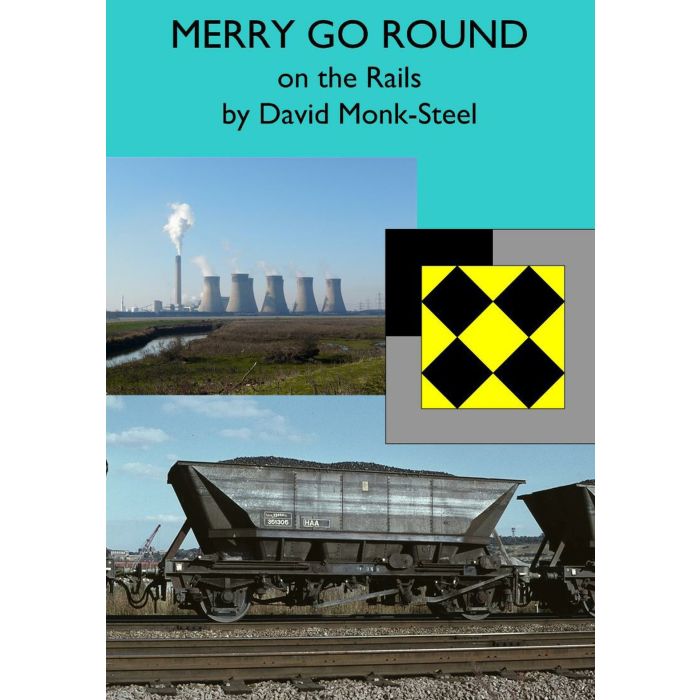MERRY-GO-ROUND on the Rails
Bright , shiny and new, the Merry go Round (MGR) hopper wagons were to help fuel the mid 1960s white heat of the technological revolution .... and keep all our lights on. Similarly, this new book by the Historical Model Railway Society (HMRS) colourfully records the detail of this revolution. It is also timely, as the last of the classical MGR coal hopper wagons are now withdrawn and consigned to history.
The author, David Monk-Steel, is a professional railwayman, for many years working on keeping the freight moving. Using his own experience and research, and drawing on the archives of fellow HMRS members, and the memories of fellow railwaymen, he has fleshed out the full story of why there was a need for the MGR hoppers. He begins by explaining the earlier development of the National Grid, and the few earlier railway experiences of dedicating specialist mineral carrying wagons to specific flows, both from collieries to power stations and iron ore from dock to steelworks.
Using newly prepared drawings and diagrams, David discusses the new technological innovation represented by the new MGR hoppers, which were unloaded whilst moving at a steady slow speed. To do this new loading and unloading facilities were built and specialist signalling and speed control in the locomotives introduced. These innovations are all illustrated with plans of facilities and representative photographs. These necessary developments were against a background of conservatism in the National Coal Board, which was reluctant to make the investments for the loading screens. But, if Britain was to have modernised, centralised, coal burning, electrical power generation these changes had to be made. Maximising these developments also required considerable innovation in wagon control. How this was done, using early computer techniques and the skills of railway officers whom understood the complexity of their regions, is described. The changes in motive power over the near 50 years of use of MGRs is also discussed and illustrated.
The text then discusses and illustrates the later developments of the techniques for other uses, for example for Gypsum and China clay. Finally, after illustrating the rebuilding the tired bodies of the MGR coal hoppers, the book concludes with their demise and replacement by a new fleet of bogie hopper wagons, which themselves have technological innovation, but are also retrograde in requiring a person to open the hoppers for unloading.
Although of obvious interest to modellers and historians of the BR railway age, others interested in industrial Britain, technological development and the coal and electrical generation industries will also find much to value in this revealing text. Judge for yourself if the lights would have gone out if this fundamental change in coal movement had not been successful.
| Availability | in print |
|---|---|
| Author | Monk-Steel D. |
| publisher | Historical Model Railway Society |
| Publication Year | 2012 |
| Binding | hardback - pictorial boards |
| ISBN | 9780902835306 |

